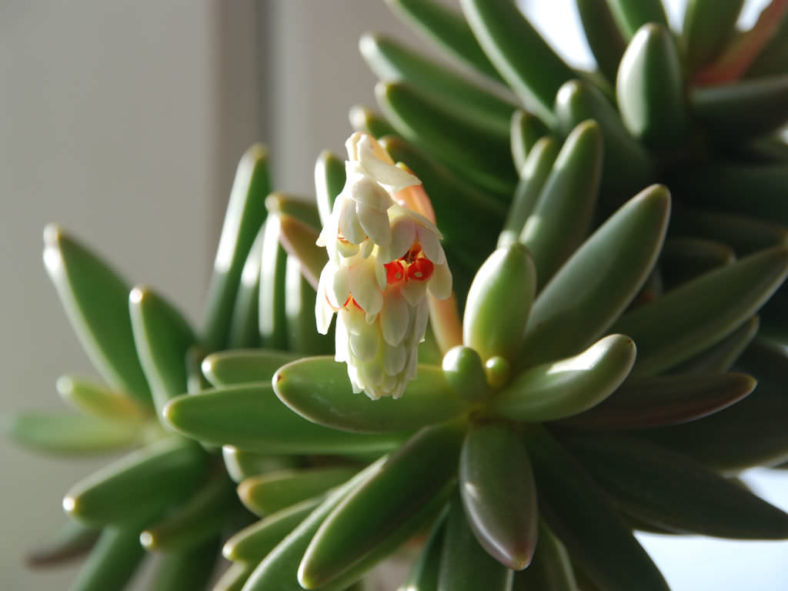Pachyphytum is a genus of slow-growing succulents in the family Crassulaceae native to Mexico. They are shrub-forming or stemless rosettes, eventually forming clumps. Leaves are plump and juicy and may have a powdery coating called farina. They range in color from green to lovely orange and even purple. Flowers are bell-shaped, usually greenish-white and deep red, and grow on long spikey inflorescences. They appear in spring and summer. The rosettes will not die after flowering.
The generic name "Pachyphytum" comes from the Greek meaning "thick leaves."
Growing Conditions
Pachyphytums will not tolerate frosts well. Temperatures below 20 °F (-6 °C) will kill the plants, and temperatures that may go below 45 °F (7 °C) during an extended period should be avoided. These succulents tolerate high heat and intense sunlight. As with most Crassulaceae members, Pachyphytums can tolerate (and even appreciate) poor soil as long as it is well-draining. They thrive in full or partial sunlight.
Allow the soil to dry before watering, and avoid getting water on the leaves. The plants will require more water in winter as they begin their active growing season. If you are unsure when to water your Pachyphytum, watch the lowermost leaves for drying signs and water them then. Pachyphytums are far more likely to survive underwatering than overwatering. The leaves will appear wilted and slightly "under-full" when they need water.

Propagation
Pachyphytums are easy to propagate from stem cuttings or a single leaf. First, leave the leaves in the open air for a day to allow the wound to callous. Next, dip the leaves into the rooting hormone and place them into a slightly moist succulent potting mix. Soon, a new rosette will grow from the base of the leaf. As soon as enough roots are present, remove the old leaf and repot the rosette.
General Care
No pruning is necessary except to remove any leaves which have died. This will help to avoid rot and bugs. Avoid touching the healthy leaves of the plant, as your body oils will leave marks.
Whether grown outdoors or indoors, these plants are good to forget about. Too much attention by nervous gardeners will kill the plant. When grown outdoors in a wet environment, ensure the soil is sandy and well-draining. If you are not careful, your plant will turn into rotten mush. When grown indoors, a standard commercial succulent soil mix works well.
Pests and Problems
Mealybugs are one of the most common pests. The symptoms of a mealybug infestation are slowed or stopped growth (in summer, this is a normal sign of dormancy). If this occurs without apparent cause, remove the plant from the pot and examine the roots or the leaf-stem junctions. A white cottony substance is a sure sign of mealybug infestation. Remove all soil and wash the roots gently. Dab, the cottony spots with a Q-tip, dipped in rubbing alcohol. Remove any damaged roots with a sharp, sterile knife or scissors. Let them dry before replanting.
If you have an unhealthy plant, the first thing to examine is your watering habits. The most common problem is root rot due to overwatering.
Source: everything2.com
Links
- Back to genus Pachyphytum
- Succupedia: Browse succulents by Scientific Name, Common Name, Genus, Family, USDA Hardiness Zone, Origin, or cacti by Genus